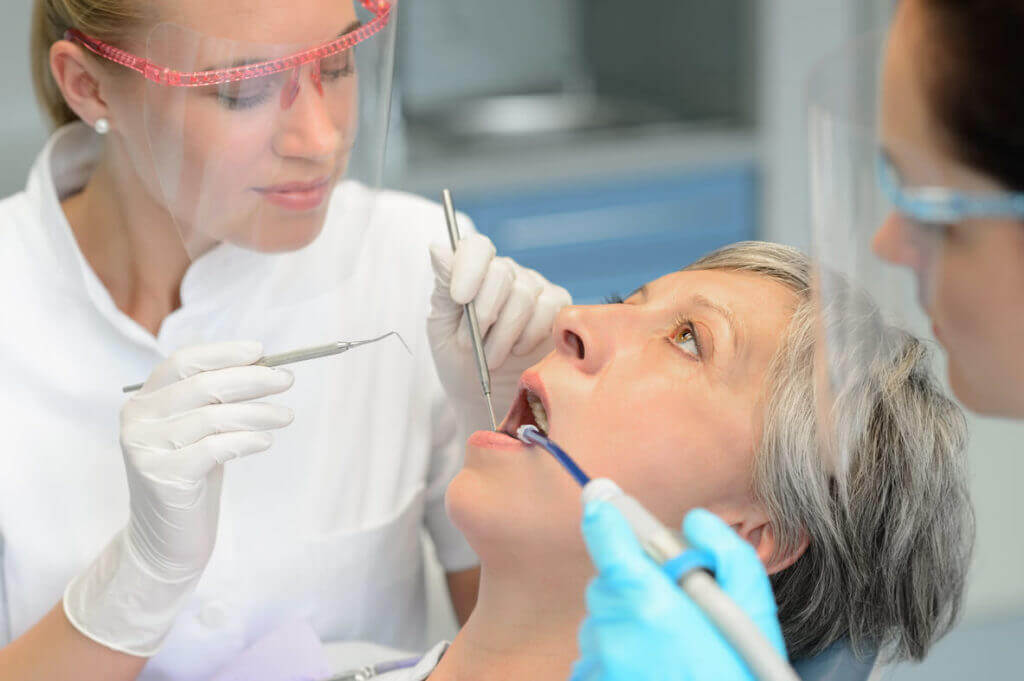The 5-Minute Rule for Legacy Orthodontics
The 5-Minute Rule for Legacy Orthodontics
Blog Article
Not known Incorrect Statements About Legacy Orthodontics
Table of ContentsThe 45-Second Trick For Legacy Orthodontics6 Simple Techniques For Legacy OrthodonticsRumored Buzz on Legacy OrthodonticsHow Legacy Orthodontics can Save You Time, Stress, and Money.Unknown Facts About Legacy Orthodontics
In enhancement, we provide flexible therapy routines, adaptable repayment alternatives and an enjoyable, satisfying experience.An orthodontist is a dentist educated to diagnose, stop, and treat teeth and jaw irregularities. They fix existing problems and are trained to recognize problems that may establish in the future. Orthodontists work with people of every ages, from children to adults. Individuals often connect a best smile with great wellness.
Malocclusion, or misaligned teeth, can lead to oral problems, including dental cavity, periodontal disease, and hard or agonizing chewing. Not everybody is born with straight teeth. If you have a negative bite or large rooms between your teeth, you may desire to get in touch with a dental expert concentrating on orthodontic treatment.
The 6-Minute Rule for Legacy Orthodontics
( Photo Credit Report: DigitalVision/Getty Images) Orthodontists make use of taken care of and removable oral tools, like braces, retainers, and bands, to transform the position of teeth in your mouth. Orthodontic treatment is for dental abnormalities, consisting of: Misaligned teethBite troubles, like an overbite or an underbiteCrowded teeth or teeth that are as well far apartJaw misalignmentThe goal of orthodontic treatment is to improve your bite.
A healthy bite guarantees you can eat, eat, and talk effectively. While you might think of orthodontists as generally for children or young adults who require braces, they can deal with dental issues at any type of age. Orthodontists participate in college, dental school, and orthodontic institution. After graduation, they invest 2 or 3 years in an orthodontic residency program.
All orthodontists are dentists, but not all dental experts are orthodontists. Orthodontic residency programs provide extensive, focused direction for oral professionals. They concentrate on two locations: Exactly how to appropriately and safely move teeth Exactly how to properly guide advancement in the teeth, jaw, and faceOnce an orthodontist has completed training, they have the option to become board licensed.
The 8-Second Trick For Legacy Orthodontics
Misalignment, or malocclusion, is the most common factor people see an orthodontist. It is hereditary and is the result of size distinctions in between the top and lower jaw or in between the jaw and teeth. Malocclusion leads to tooth congestion, a twisted jaw, or irregular bite patterns. Malocclusion is usually treated with: Your orthodontist connects metal, ceramic, or plastic square bonds to your teeth.
If you have just minor malocclusion, you may be able to use clear braces, called aligners, rather than conventional dental braces (https://legacyortho.blog.ss-blog.jp/2024-10-01?1727712062). Some individuals need a headgear to aid move teeth into line with stress from outside the mouth. After dental braces or aligners, you'll need to wear a retainer. A retainer is a custom-made tool that maintains your teeth you can try these out in position.
They're frequently utilized on children. They can create additional space in the mouth without needing to pull teeth. If you have a significant underbite or overbite, you might need orthognathic surgery (also called orthodontic surgical procedure) to extend or shorten your jaw. Orthodontists make use of cables, medical screws, or plates to sustain your jaw bone.
You may require to see an orthodontist if you have: Crowding or otherwise enough space for all of your teethOverbite, when your upper teeth come by your bottom teethUnderbite, when your base teeth are too much forwardSpacing or concerns with gapsCrossbite, which is when your upper teeth fit behind your bottom teeth when your mouth is closedOpen bite or an upright space in between your front base and upper teethMisplaced midline, when the center of your base and upper teeth do not line up Correcting a dental malocclusion can: Make attacking, chewing, and talking easierImprove the balance of our face and your general appearanceEase discomfort from temporomandibular joint disordersSeparate your teeth and make them simpler to clean up, aiding avoid dental cavity or dental caries It's usually a dentist who first notices misaligned teeth throughout a regular test.
Legacy Orthodontics Things To Know Before You Buy

During your very first orthodontic examination, you'll likely have: A dental examPhotos taken of your face and smileDental X-raysPanoramic (360 level) X-rays of your face and headImpressions to create molds of your teethThese examinations will certainly help your orthodontist recognize just how to wage your therapy. orthodontist. An orthodontist is a dental professional that's had training to treat your teeth and jaw
Orthodontists may execute surgical treatment, exams,X-rays,and even more to aid you attain an extra comfy, much healthier smile. An orthodontist is concentrated on your bite, so something like a chipped tooth would certainly be handled by a dental practitioner. Orthodontists are dental professionals but not all dental professionals are orthodontists. Orthodontists are focused on your bite, or the method your teeth fit with each other, and the straightness of your teeth.
Ever asked yourself exactly how stars constantly appear to have perfectly straightened teeth? Orthodontists are oral experts who focus on dealing with irregularities in the teeth and jaws.
Legacy Orthodontics Things To Know Before You Get This

, orthodontists have a diverse toolkit at their disposal. These tried-and-true dental braces utilize a system of brackets bonded to the teeth and attached by cords.
These detachable trays are customized to gradually move the teeth's placement. In cases of slim jaws, palatal expanders can be made use of to produce space for appropriate tooth positioning.
Report this page